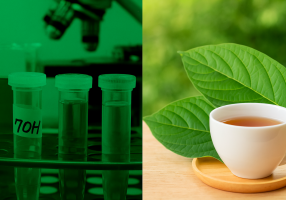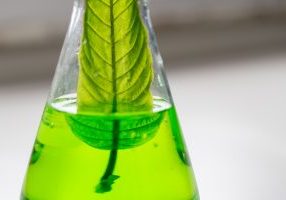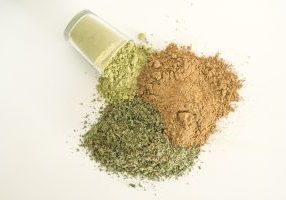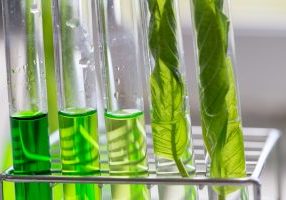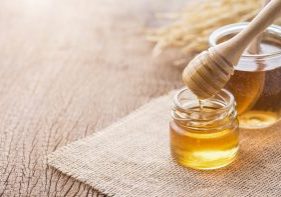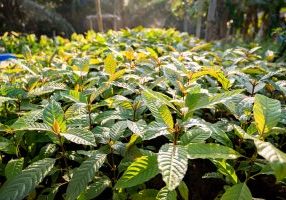Natural substances like kratom have an effect on the body because of their chemical composition. Kratom itself is made up of many chemical components. When those components are released in the body, they bind and interact with human physiology in different ways.
While only a few kratom alkaloids are well known even among veteran consumers, kratom is actually made up of more than 40 alkaloids – and counting! What are these kratom alkaloids, and what types of effects are they being studied for?
Learning more about these alkaloids can help you better understand the myriad of ways kratom may be further developed and used. Let’s take a closer look!
What Are Kratom Alkaloids?
Alkaloids are a type of naturally-occurring compounds found in many plants. These compounds contain at least one nitrogen atom. These compounds bind readily with receptors in the human body; they cause physiological effects because of this binding. Common alkaloids include caffeine and morphine. The impacts of alkaloids vary widely.
Kratom is a natural plant, and kratom leaves have a variety of alkaloids in them. In fact, more than forty different alkaloids have been found in kratom. Many of these alkaloids have specific physiological effects on the body. Those alkaloids are being studied in more detail to find out what types of benefits might be found.
The specific alkaloid concentration in kratom leaves can vary from tree to tree, strain to strain. For that reason, additional research of the individual components is even more critical. Once the individual alkaloids are better understood, the potential effects of various alkaloid combinations can be studied in more detail as well.
Kratom Alkaloids Explained
Now that you know what alkaloids are, let’s cover kratom’s alkaloids and alkaloid composition of this plant in more detail.
What We Know
The alkaloid content of kratom leaves varies from plant to plant, tree to tree, and location to location. There is no guarantee of the exact breakdown of alkaloids in any kratom leaf because many things affect the alkaloid composition:
- Harvesting time and frequency
- Weather patterns
- Soil composition
- When leaves are harvested
- Dry season length
- Strain
- Geographic location
- Age of leaves
As teams studied kratom leaves in the 1970s and 1980s, they found that the alkaloid concentration varied in many ways. They began to compare samples and found that the above factors, as well as many others, changed what alkaloids were most prevalent in the leaves.
Despite the fact that more than 40 alkaloids have been identified in kratom leaves, only two of those alkaloids (mitragynine and 7-hydroxymitragynine) are given credit for the effects of kratom. That’s because they occur in the greatest concentrations. Mitragynine usually makes up around 60% of the alkaloid content of kratom leaves on average.
As kratom is studied in more detail in upcoming years, we can expect to find out more about the variances in alkaloids in terms of effects and growth patterns for the kratom plants.
Meet The Alkaloids
Though more research still needs to be done about these substances, there are some alkaloids that have been studied after being found in kratom.
Mitragynine
The most prevalent alkaloid in most kratom leaves, mitragynine, is partially responsible for many of kratom’s active effects. It has been studied for many common uses, which can be fairly easily researched. As the primary kratom alkaloid, it is one of the two alkaloids that has its content percentage detailed on kratom packaging.
7-hydroxymitragynine
The other kratom alkaloid that is typically acknowledged by kratom vendors is 7-hydroxymitragynine. While the amount of this alkaloid is substantially smaller than that of mitragynine, it is also a significant player in kratom’s active effects. It has been studied for its unique effects and receptor binding in particular.
The Phyllines
The naming of alkaloids is typically based on the original plant family that those alkaloids come from. A number of alkaloids found in kratom are named with the -phylline base. Mitraphylline, isomitraphylline, speciophylline, rhynchophylline, isorhynchophylline, and ciliaphylline are all found in kratom.
These alkaloids are likely to be studied for their potential beneficial actions, and we hope to learn more soon about how they interact with functions of the human body.
Paynantheine and Speciogynine
After mitragynine, paynantheine and speciogynine make up for the largest percentage of alkaloids in kratom leaves. These two alkaloids have been compared to similar alkaloids with and it may be assumed that their qualities are similar. It is possible that these alkaloids contribute to some benefits of kratom, but more research is needed.
Corynoxine A and B
Found in other natural plant products as well, these alkaloids interact with important receptors in the human body. This means that they may affect the binding of body chemicals in some way. These alkaloids, like many others, are found in concentrations of far less than 1% in most leaves.
Why Is It Important To Know About These Alkaloids?
Simply put: we need to put more resources into studying them!
Kratom research has been progressing at a very slow pace for the last few years. Among other reasons, that is because of the complicated laws surrounding the possession, use, and classification of kratom. Funding kratom research is difficult whenever there are no laws clearly protecting its status.
As laws become clearer and kratom earns a more protected status in the US, we can expect to see more research about kratom and how it can affect the body. In particular, a lot of that research is likely to focus on the individual alkaloids found in kratom and their effects.
Scientists, in particular, are very interested in kratom’s potential effects. However, more research needs to be done on kratom’s alkaloids.
The Future Of Kratom
Kratom as a whole plant and food product will continue to be studied, but we can also expect to see more and more branch-off studies of individual components. Often, it is easier to understand the effects of the broad plant if we studied individual chemical components first.
Mitragynine and 7-hydroxymitragynine are being studied more than other alkaloids at this time, but that is going to change as kratom becomes more heavily researched. We’re excited to find out what is discovered about every facet of kratom!

